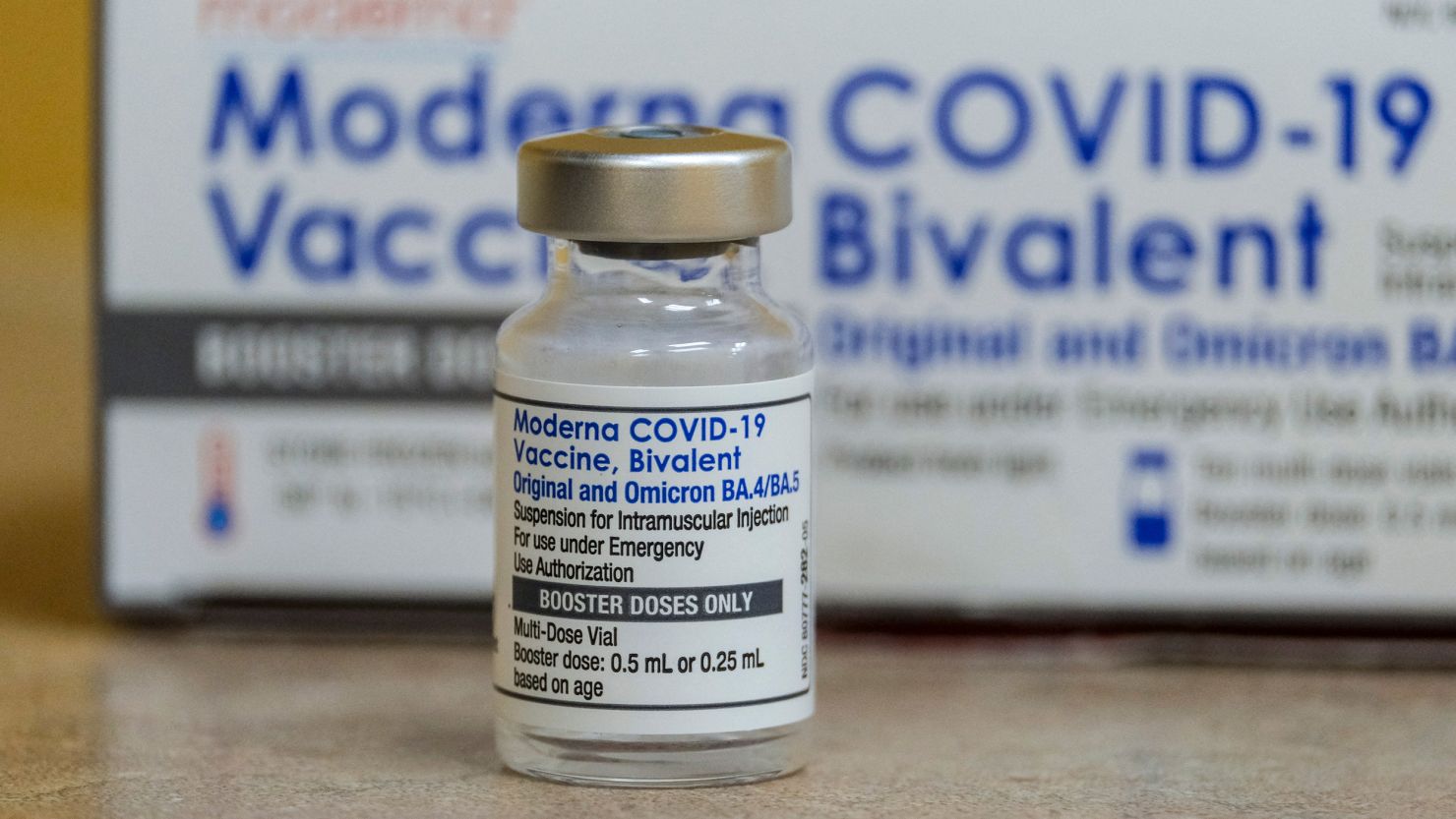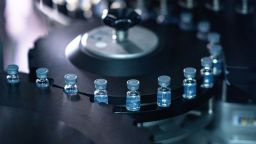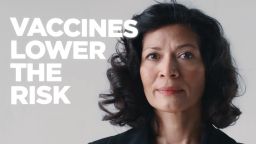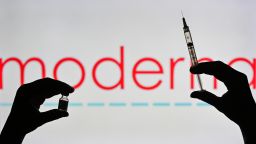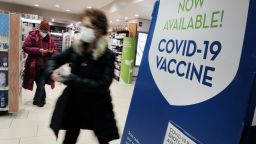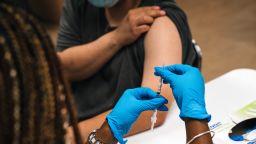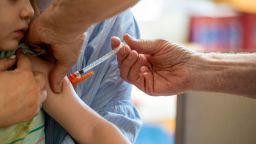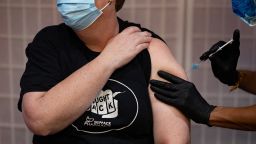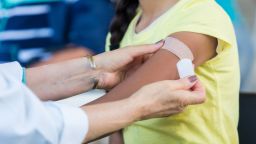Some vaccine advisers to the federal government say they’re “disappointed” and “angry” that government scientists and the pharmaceutical company Moderna didn’t present a set of infection data on the company’s new Covid-19 booster during meetings last year when the advisers discussed whether the shot should be authorized and made available to the public.
That data suggested the possibility that the updated booster might not be any more effective at preventing Covid-19 infections than the original shots.
The data was early and had many limitations, but several advisers told CNN that they were concerned about a lack of transparency.
US taxpayers spent nearly $5 billion on the new booster, which has been given to more than 48.2 million people in the US.
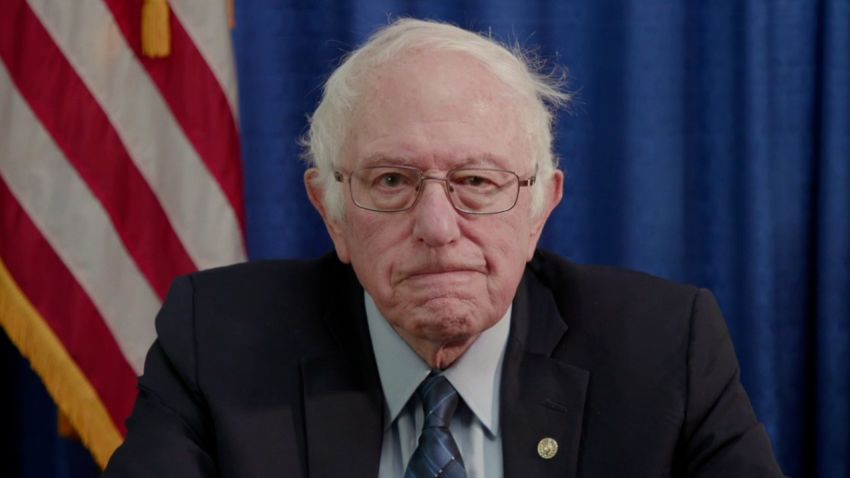
“I was angry to find out that there was data that was relevant to our decision that we didn’t get to see,” said Dr. Paul Offit, a member of the Vaccines and Related Biological Products Advisory Committee, a group of external advisers that helps the FDA make vaccine decisions. “Decisions that are made for the public have to be made based on all available information – not just some information, but all information.”
At a meeting of this FDA advisory group in June and a meeting in September of a panel that advises the US Centers for Disease Control and Prevention, the experts were presented with reams of information indicating that the new vaccine worked better than the one already on shelves, according to a review of videos and transcripts of those meetings and slide presentations made by Moderna, CDC and FDA officials.
That data – called immunogenicity data – was based on blood work done on study participants to assess how well each vaccine elicited antibodies that fight off the Omicron strain of the virus that causes Covid-19.

The data that was not presented to the experts looked at actual infections: who caught Covid-19 and who did not.
It found that 1.9% of the study participants who received the original booster became infected. Among those who got the updated bivalent vaccine – the one that scientists hoped would work better – a higher percentage, 3.2%, became infected. Both versions of the shot were found to be safe.
This infection data was far from complete. The number of study subjects who became infected was very small, and both the patients and the researchers were aware of who was getting the original shot and who was getting the new booster.
Despite these imperfections, the data was included in a preprint study that was posted online in June, again in September in an FDA document and then later that month in a top medical journal – and advisers to the FDA and the CDC said the data should have been shared with them, too.
“It’s not a group of children. We understand how to interpret these results,” said Dr. Eric Rubin, a member of the FDA vaccine advisory committee.
The six FDA and CDC advisers interviewed by CNN said that this infection data wouldn’t have changed how they voted, because the data had such limitations, but it still should have been presented to them.
“There should always be full transparency,” said Dr. Arnold Monto, a professor of epidemiology at the University of Michigan School of Public Health and acting chair of the FDA advisers’ group. “These data should not be dismissed. They are early, but they indicate that we need to look at them and see what their value is.”
Dr. Pablo Sanchez, a member of the CDC’s panel, called the Advisory Committee on Immunization Practices, said that if the data “was looked at as part of the study, it should have been presented to the advisers prior to their decision.”
The FDA and the CDC convene their advisory board meetings and make presentations to the advisers. At last year’s meetings, Moderna executives made presentations, as well. The advisers then make their recommendations to the agencies, and the agencies decide whether to authorize the shots and recommend them to the public.
Moderna spokesman Christopher Ridley said in an email to CNN that the company shared the infection data with the FDA and posted the study manuscript before the agency’s panel meeting in June “in response to requests that we share an update from the ongoing study.”
That study preprint was posted online June 25, three days before the FDA advisers met.
Michael Felberbaum, an FDA spokesman, told CNN in an email that “the FDA received the preprint less than a day prior to the advisory committee meeting,” and “the information was therefore not provided in an adequate timeframe for it to be included in the agency’s meeting materials, and generally the FDA only discusses data at advisory committee meetings that the agency has had the opportunity to substantively review.”
“Numerous studies support the finding that the COVID-19 vaccines remain the best defense against the most devastating consequences of COVID-19 such as hospitalization and death, and that the updated vaccines may help provide better protection against the currently circulating variants,” Felberbaum wrote.
He added that “throughout the pandemic, the FDA has remained as transparent as possible regarding its processes and decision-making regarding the COVID-19 vaccines” and that Moderna could have chosen to present the data at the FDA advisory committee meeting.
Kristen Nordlund, a CDC spokeswoman, said that “due to the many limitations involving this clinical data, it was not featured” in the CDC’s advisory committee discussion.
Emphasis on transparency
The advisers said there are three main reasons why it matters that the infection data was not presented to them.
One, they said, is the potential impact of their decision: If Americans were going to be getting these shots, all available data should be brought to the table for consideration.
Two, the advisory committee meetings are streamed live online, and regulatory agencies around the world use the information to help make decisions about vaccines in their countries.
Three, they stressed that transparency is important. The public doesn’t witness conversations among FDA officials or between agency officials and pharmaceutical company executives, but they do get to watch the advisory panels’ proceedings.
The outside experts said the pandemic has demonstrated the extent of vaccine hesitancy in the US, and it would be reassuring to the public if all data, not just some, were discussed during the advisers’ meetings.
Infection data not included in presentations by FDA and Moderna
Last summer, as the FDA’s and CDC’s outside advisers considered the updated boosters, the stakes were high. They knew that in just a matter of months, winter would be approaching, and Covid rates could spike. They also knew the original vaccine was getting less effective with each new variant and that the addition of the Omicron strain in the updated booster might help battle the virus.
The FDA advisers – 21 voting members, including infectious disease experts and vaccinologists from Stanford, the University of Pennsylvania and Harvard – met for a full day on June 28.
Dr. Stephen Hoge, the president of Moderna, made a presentation to the advisers and frequently referred to information from the preprint study that had been posted three days before. The study was funded by Moderna and led by company scientists, and it had not been subjected to peer review or published in a medical journal.
The data Hoge shared with the advisers demonstrated that blood tests on about 800 study participants indicated that the new bivalent booster was “superior” at increasing antibodies to the Omicron variant compared with the original vaccine.
Hoge did not mention another part of the study that cast a less-positive light on the updated shot.
In that part, the researchers gave some participants the existing vaccine and other participants the updated booster, and then they kept track of who became infected with Covid-19.
Among the hundreds of participants who received the original vaccine and showed no evidence of a prior Covid-19 infection, over the period of the small study, 1.9% became infected. Among the hundreds who received the new bivalent vaccine, a higher percentage, 3.2%, became infected. The preprint did not indicate whether these findings were statistically significant.
A 22-page FDA briefing document given to the advisers did not mention this infection data.
Dr. Jerry Weir, director of the Division of Viral Products at the FDA’s Office of Vaccines Research and Review, also did not mention the infection data in his presentation to the advisers.
At the end of the June 28 meeting, the FDA advisers voted 19-2 to recommend the inclusion of an Omicron variant for the Covid-19 booster vaccine. Offit, a professor of vaccinology at the Perelman School of Medicine at the University of Pennsylvania, and Dr. Henry Bernstein, a professor of pediatrics at the Zucker School of Medicine at Hofstra/Northwell in New York, voted in opposition.
Over the next month, the US government announced agreements to purchase the bivalent booster from Pfizer and Moderna: a contract for $3.2 billion with Pfizer and for $1.74 billion with Moderna.
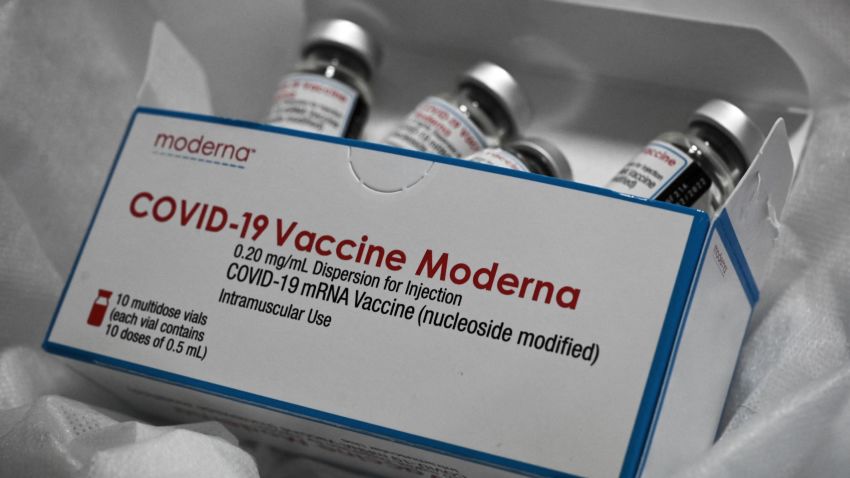
Limitations of Moderna’s infection data
The infection data that wasn’t included in the Moderna and FDA presentations has several serious limitations, according to the six advisers who spoke to CNN.
First, the numbers were very small: The study analyzed only hundreds of patients, and only 16 became infected. None of them ended up in the emergency room or were hospitalized.
As Rubin, a professor in the Department of Immunology and Infectious Diseases at the Harvard T.H. Chan School of Public Health and one of the FDA advisers, pointed out, vaccines are meant to prevent severe disease and death. These are “impossible to measure in such small studies,” and a “better antigenic match could result in decreased numbers of people who get hospitalized or who die.”
Second, participants were not randomly assigned to receive either the original or new vaccine, and the study was not double-blind, meaning the participants and the researchers knew who was receiving which shot. Lack of randomization and blinding can bias study results.
Third, the primary purpose of the study was not to study infection rates but to do immunogenicity analyses, taking blood from participants and examining their antibody responses to the vaccine.
Ridley, the Moderna spokesman, noted these limitations in his email to CNN.
“The primary objective of the study was to assess the safety and immunogenicity of the bivalent vaccine. The study was not randomized and did not control for infection risk between arms, making comparison of a relatively small number of cases problematic,” he wrote.
Nearly $5 billion for updated boosters
On August 31, about two months after the FDA advisers’ meeting, the agency authorized the Moderna bivalent vaccines. The Moderna infection data was included in the agency’s written decision, but it wasn’t posted online until September 13, according to Felberbaum, the FDA spokesman.
On September 1, the CDC advisers – 14 voting members – met to consider whether to recommend the bivalent boosters for Americans to get in the fall. Several CDC scientists presented data at that meeting but did not include the infection data.
Nordlund, the CDC spokeswoman, said in her email that the “CDC was aware” of the data that would later be published in The New England Journal of Medicine but that assessing infections was an “exploratory objective of the study,” which was “not designed to assess vaccine effectiveness.” She added that in assessing infections, “researchers used different durations and points in time among a very small group of people,” and because of the limitations of the data, it was not featured at the meeting.
“CDC vaccine recommendations are made following an evaluation and presentation of high-quality vaccine efficacy or immunobridging data,” Nordlund wrote.
Dr. William Schaffner, a non-voting member of the CDC’s advisory committee, called Nordlund’s argument “very weak.”
“The data are limited, but they are informative, and I think one would have anticipated that a complete presentation would have included them,” said Schaffner, an infectious disease specialist at Vanderbilt University Medical Center.
Dr. Jacqueline Miller, a senior vice president at Moderna, presented to the advisers. Like her colleague Hoge, the company president, she showed material suggesting that the bivalent vaccine was superior and did not show slides detailing the statistics about the infection rates, according to a copy of the slides she presented.
Several hours into the meeting, one of the CDC advisers, Dr. Sybil Cineas, an associate professor of medicine at the Warren Alpert Medical School of Brown University, asked Miller about cases of Covid-19 among study subjects who received the original vaccine versus the updated bivalent booster.
Miller said that among subjects with no evidence of prior infection, as well as those with evidence of prior infection, the disease incidence rates were 2.4% for the group who received the original vaccine and 2.5% for those who got the bivalent booster.
That data would be published two weeks later in The New England Journal of Medicine.
When she answered Cineas’ question, Miller did not mention other aspects of the infection data in the published study. That data indicated that among hundreds of participants with no previous Covid-19 infections, infection occurred in 1.9% of those who’d received the old vaccine and in 3.2% of those who’d received the new bivalent vaccine. She also did not mention breakdowns of whether participants were sick with Covid or had asymptomatic illnesses. The study, like the preprint, did not mention whether any of these findings were statistically significant.
At the end of the meeting, the CDC advisers voted 13-1 in favor of recommending the bivalent booster, with Sanchez, a professor of pediatrics at the Ohio State University College of Medicine, voting in opposition. CDC Director Dr. Rochelle Walensky signed off on the recommendation later that day, and the vaccines were made available to the public. Currently, they are the only booster available once someone has had their primary series of a Covid-19 vaccine.
More than six months after the FDA advisers met, Moderna still has not released data from a randomized Phase 3 trial comparing infections in participants who received the new booster with those who received the old shot. The company expects to release such results “shortly” with about 3,000 participants, according to Ridley.
Pfizer does not “currently have data on incidence of infection post bivalent booster. However, we continue to monitor real-world data and collect data from our own studies,” according to a statement from Jerica Pitts, senior director of global media relations.
Together, the new updated boosters from Pfizer and Moderna cost taxpayers nearly $5 billion. To put that in perspective, that’s about the size of the annual budget for the state of Delaware.
Former FDA scientist: No excuse for excluding infection data
A former FDA scientist who helped run the agency’s vaccine division told CNN that if he were still at the agency, he would have advocated for sharing the infection information with the advisers, even if it was made available only a short time before the meeting.
“I don’t think there’s any excuse for excluding it,” even with its imperfections, said Dr. Philip Krause, who served as deputy director of the FDA’s Office of Vaccine Research and Review until he resigned in October 2021.
“The company’s failure to present this information at the [FDA advisers meeting] and the omission of discussion about the data at that meeting raises questions about the ability of the process to provide a full and transparent review of the data,” he added.
Krause said his main concern was preserving – or regaining – the public trust in the FDA.
“That’s the critical thing,” he said. “The FDA’s objective review of the data is what is providing the great, great value to the American people, because this way they know that somebody who doesn’t have a stake in the outcome has looked at the deepest possible level at these data.”
FDA and CDC vaccine advisers echoed Krause’s concerns about transparency.
“I think that as much data that’s available should be made public and available for discussion by advisory groups so that the public can see, yes, the available science has been evaluated as best as [possible] at that particular time,” said Bernstein, the member of the FDA advisory committee.
Bernstein added that he was disappointed that the data had not been presented to him and the other advisers.
Offit, the member from the University of Pennsylvania, said he was angry.
“I was angry to find out that there was data that was relevant to our decision that I didn’t get to see. Angry because they should trust us to make the decision based on all the data. These agencies, whether it’s the FDA or CDC, can’t make that decision for us. That’s the point of having an independent advisory committee,” he said.
‘It shook my faith’
About a month after the CDC advisers met, studies were released from researchers at Harvard and Columbia suggesting that the new vaccines didn’t work any better than the original.
Those studies, which were very small and only in preprint and not in a medical journal, measured immune responses after people got the bivalent vaccine compared with the original version of the vaccine.
Get CNN Health's weekly newsletter
Sign up here to get The Results Are In with Dr. Sanjay Gupta every Tuesday from the CNN Health team.
“We essentially see no difference” between the old boosters and the new about a month after the shot, said Dr. David Ho, a professor of microbiology and immunology at Columbia whose team authored one of the studies.
President Joe Biden and other administration officials continue to emphasize that the updated booster is the best way to avoid hospitalization or death from Covid-19. But nearly four months after its release, only 15.4% of the US population age 5 and older has opted to get the shot, according to CDC data.
On January 26, the advisers are scheduled to meet again to discuss future Covid-19 vaccination regimens.
Offit, the FDA vaccine adviser, said the Columbia and Harvard studies convinced him even more that the infection data and all the related caveats should have been given to the advisers from the beginning.
“This was not acceptable. I understand we’re in the middle of a pandemic. I understand we’re building the plane while it’s still in the air, but you can’t do this,” he said. “It did shake my faith. It shook my faith in how these decisions were being made.”
CNN’s Amanda Sealy and Raenu Charles contributed to this report.

